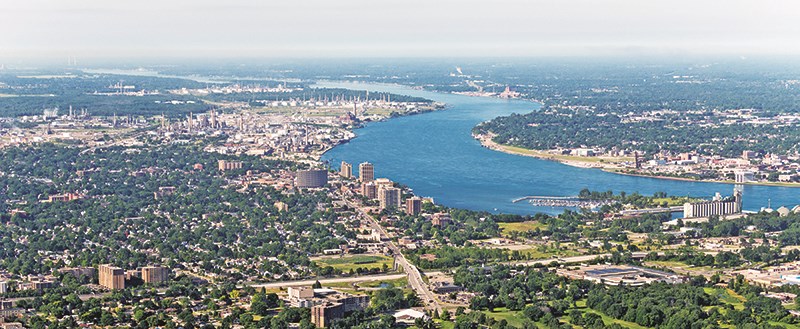George Mathewson
The testing of warning sirens that takes place on Monday at 12:30 p.m. is a weekly reminder for Sarnians that living beside a complex of petrochemical plants is not without risk.
The sirens emit an otherworldly sound that has scared the bejesus (“What the hell is that!) out of more than one uninitiated visitor.
But on the Need-To-Worry scale Sarnia’s weekly wail is nothing compared to the preventative measure Ontario has been ordered to take by the Canadian Nuclear Safety Commission.
In October, everyone living and working within 10 kilometres of the Pickering, Darlington and Bruce nuclear stations were sent a large blue box of potassium iodine pills, which can help fight radiation poisoning in the event of a nuclear accident.
That’s 200,000 households and businesses.
Greenpeace has argued that a 50-kilometre radius for the pills would be safer, and the Canadian Environmental Law Association filed a request under the Ontario Environmental Bill of Rights for an evidence-based review of the policy surrounding distribution of the anti-radiation pills.
And speaking of risk …
Sarnia is often linked with air pollution, and for good reason. Not long ago residents here inhaled some of the dirtiest air in Canada.
But 2015 brought the easiest breathing in a long time, according to data from Ontario Air Quality Health Index.
The Index charts the relative risk of common air pollutants known to harm human health, including ground-level ozone, fine particulate matter and nitrogen dioxide.
Last year Sarnia’s air quality was in the “low-risk” zone for 297 days. Only once, on July 2, did air pollution levels rise to the “high risk” zone, reaching 7 out of 10 on the scale, and the episode lasted for just one hour.
Sarnia’s air isn’t perfect by any means and Aamjiwnaang First Nation residents and others who live closest to industry are impacted disproportionately. But it was an encouraging sign.
Just a decade ago, in 2005, the Environment Ministry issued so many smog advisories that residents were urged to close their doors and windows and avoid strenuous exercise on 46 different days.
I remember that summer with bitterness. My elderly mother was having difficulty breathing and couldn’t go outside, becoming a virtual prisoner in her air-conditioned living room.
Smog is something generated on hot sunny days and it’s likely that cooler weather was the biggest reason for last year’s improved air quality.
But I have no doubt the elimination of coal-fired power plants in Ontario and a reduction in industrial emissions, both from local and U.S. sources, also played a part.
